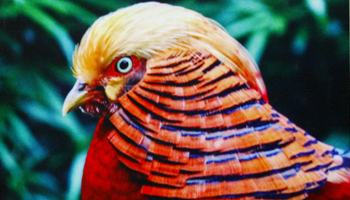WASHINGTON, Jan. 19 (Xinhua) -- Chinese and German researchers have found that some species of moths may have evolved an "ironic" strategy to resist microbial infections and flourish in microbe-rich environments.
In a study published Thursday in the U.S. journal Cell Chemical Biology, they reported for the first time that a bacterial species commonly found in the gut of the cotton leafworm and other insects secretes a powerful antimicrobial agent that kills off competing bacteria while defending its host against pathogens.
"It has long been proposed native gut bacteria are an important component of host defense, but until now, the responsible species and molecular mechanism have not been clearly demonstrated," first author Yongqi Shao of China's Zhejiang University, said in a statement.
"We show that the evolutionary success of insects is partially based on a symbiotic association with gut microbes, which co-evolved with their hosts over millions of years."
Insects are the largest group of animals on Earth, comprising over a million known species, nearly half of which are herbivores.
It's not uncommon that insect herbivores ingest a wide variety of potentially harmful microorganisms during a feast, yet they are remarkably resistant to infections.
"Increasing evidence in both vertebrates and invertebrates suggests that gut bacteria defend hosts against invading microbes," said Shao.
"But the species that exert this protective effect have rarely been identified, leaving the molecular mechanism of action unclear."
In the new study, Shao and senior study author Wilhelm Boland of the Max Planck Institute for Chemical Ecology looked at the cotton leafworm, Spodoptera littoralis, which is one of the most widespread insect herbivores in the temperate regions, causing substantial economic losses in crop production.
They found that the composition of gut microbes colonizing this pest changes dramatically during larval development.
Whereas young larvae were inhabited by a variety of virulent Enterococcus species, older larvae were dominated by E. mundtii, which has rarely been documented as a pathogen, Shao said.
Further research showed that E. mundtii inhibited the growth of other related bacterial species by secreting an antimicrobial peptide called mundticin KS.
While this toxin was undetectable in young larvae, it dramatically increased in abundance in older larvae due to expansion of the E. mundtii population, shaping the microbiome with surprising efficiency.
In other words, the antimicrobial provides a competitive advantage for E. mundtii, contributing to its dominance in the gut microbiome, while protecting the cotton leafworm against pathogens.
"We expect that protective associations with antibiotic-producing bacteria is a common strategy of insects against microbial invaders," Boland said.
The researchers said they will next examine whether similar mechanisms exist in other insect species, and look for additional toxic compounds that shape the microbiome during host development.
They believed that the findings could have widespread implications for agriculture and health.
For example, antimicrobial peptides could be used as food preservatives, and understanding the role of indigenous gut residents could contribute to the development of novel biocontrol strategies against herbivorous insect pests.














